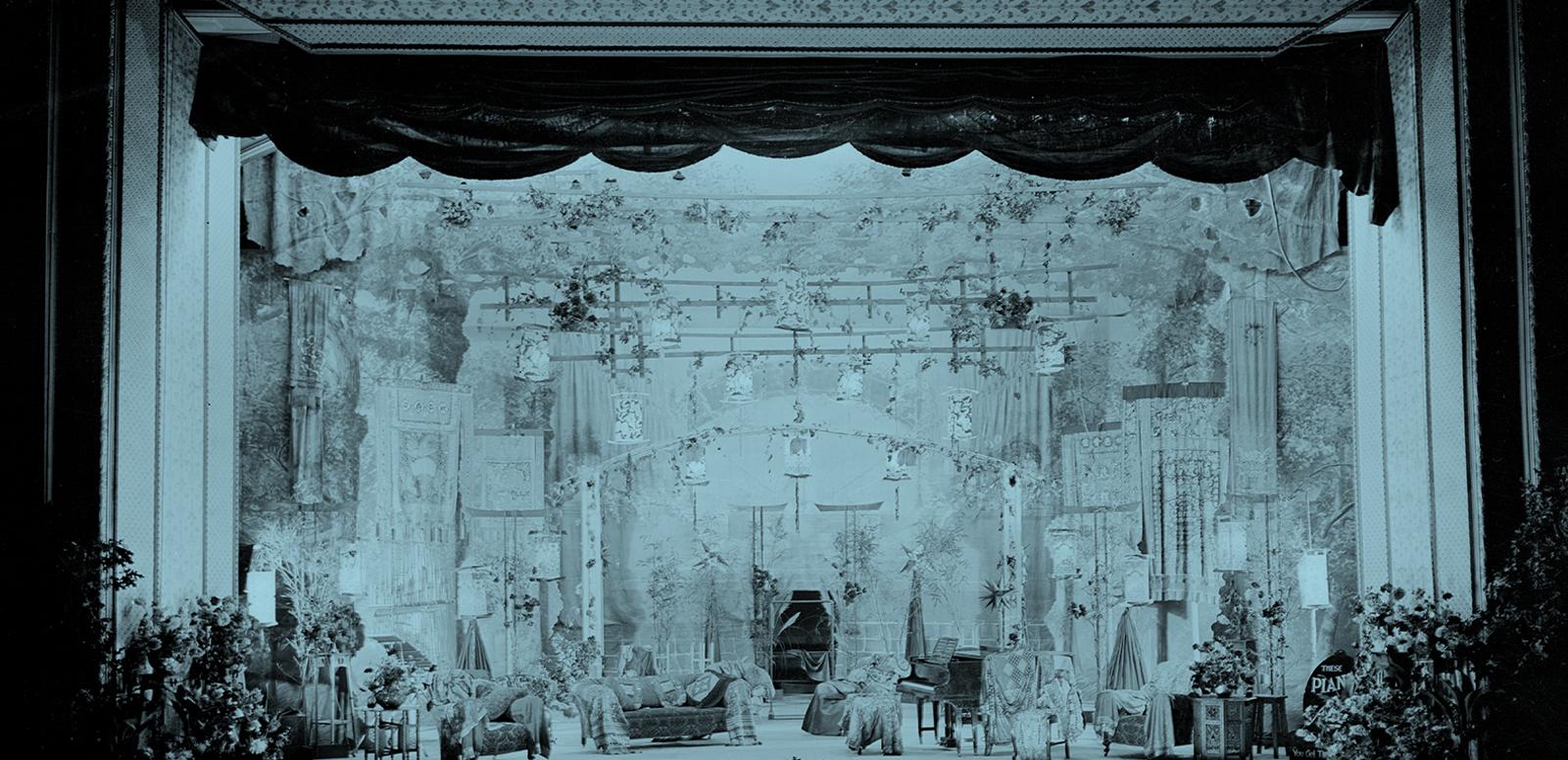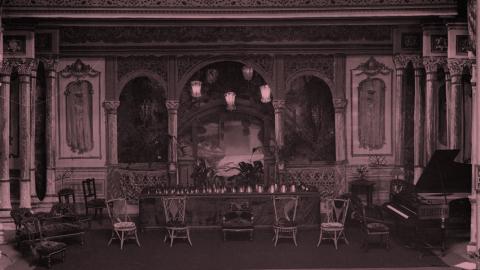

Leonard Corrick
Leonard Corrick interview transcript
This is a transcript from an audio recording of an oral history with Leonard Corrick, aged 80, c1966 (NFSA title: 419142).
Leonard Corrick interview transcript
Speaker (Leonard Corrick):
We were not long with slides and, before we left New Zealand, we had an Edison moving picture machine and films that had belonged to the Jubilee Singers they had not been able to make a success of. I became the operator and made the oxygen for the limelight for showing the pictures and operating the machine.
The few pictures we had were only about 50 to 100 feet in length, and one was of 2 chaps having a pillow fight on a greasy pole over a bathing pool. Of course, they knocked themselves off into the water and then, I would turn the machine backwards to amuse the audience, letting them see for the first time men reversing back from the water to the pole. The film in those days went into a canvas bag and had to be rolled up by hand. There was no automatic rewinder.
...
While we were playing in Melbourne the first time, my father ordered from Paris an electric plinth, to take on tour with us, for lighting the halls and theaters. We played another, then, in the cities. There were, then, only 2 towns in Australia and Tasmania with electric light, other than in capital cities. One was Launceston and the other one, a country town in Victoria.
The plinth arrived from Paris, when we got back to Melbourne, after touring the whole of the east coast of Australia, and we used it for the first time at a place called Clunes, a small country mining town. We lit the hall with incandescent lamps for the stage, 2 small arc lamps in the hall, and 2 huge arc lamps on the 40-foot pole outside to attract the people to light and to light them on the way home after the show. The pictures were shown by electric light: the first country town to see pictures shown by electricity. The venture was a great success.
For about the first 3 months, we used it first, for stage lighting. The first carbon filament incandescent globes invented by Edison, which were supplied with a lighting plan from Paris. It showed a very amber-coloured light, far from white. The importers of the plinth then telegraphed us saying they had a first shipment of new metal filament globes giving beautiful white, instead of the amber of the old-type lights, 3 times more light than carbon globes. We ordered a gross at 7 pence each, and were the first to use the new metal tantalum filaments in Australia. Our plinth suddenly burst into a flood of white light.
Maryborough in Victoria was a town that showed up the effect of our lighting in front of the town hall, as you will see from the following pictures taken at 11:00pm by the lighting from our plinth. All the capital cities in Australia, Australasia at that time, used only arc lamps for street lighting. All country towns we visited, we treated to a display of city lighting.
...
When we first started out from [our] hometown on what was intended as a holiday concert tour, our baggage comprised a tin trunk of music stands and music, et cetera. And we each had small suitcases and looked after and carried our own musical instruments except, of course, the pianist.
We made use of the pianos available in each town, but when touring India, we carried our own piano as it was impossible to find one there [with] the right pitch for our wood and brass instruments. On our Australian tours, pianos were bad and low in pitch. And my father, as soon as we got to a hall, he would try the piano and, if necessary, tune it up to the right pitch and go over during the day 2 or 3 times to make sure it would remain right.
After touring thousands of miles for over 14 years and continually adding improvements and modern equipment for the show to keep up with the times, our few pounds of luggage increased to over 7 tons. Most of it handled and required almost every day.
We had to have a 4-wheel truck for railway transport in each state, except in WA, where the narrower gauge made it necessary to use an 8-wheel bogie truck. It was then we found out how much luggage we had accumulated, as the railway department weighed it, [and] the question of excess freight came up when requiring such a big truck.
Main image: Interior of Albert Hall, Launceston, Tasmania, 1932. NFSA title: 1162537.
The National Film and Sound Archive of Australia acknowledges Australia’s Aboriginal and Torres Strait Islander peoples as the Traditional Custodians of the land on which we work and live and gives respect to their Elders both past and present.


